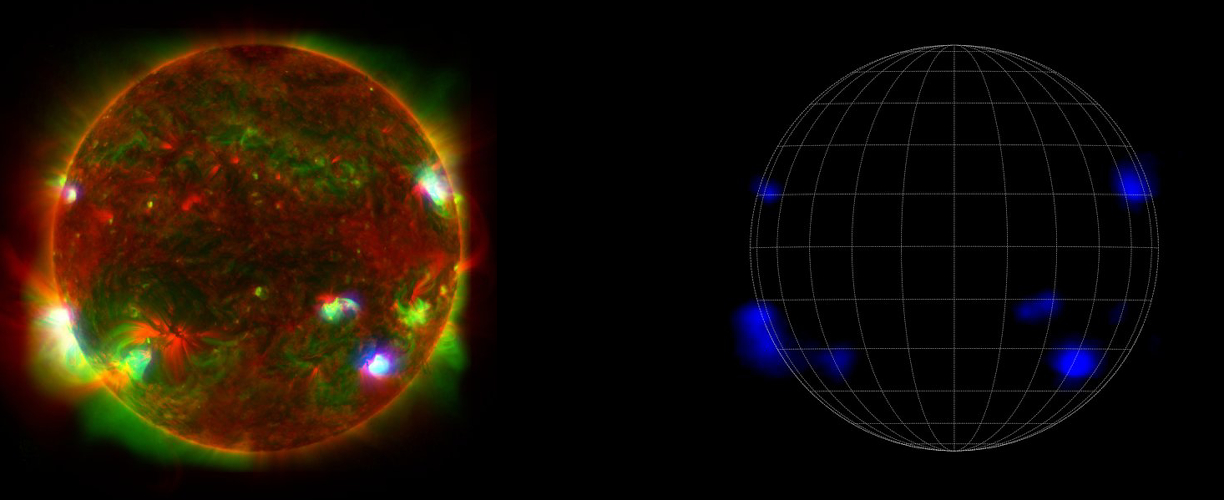
 Credit: NASA/JPL-Caltech/JAXA
Credit: NASA/JPL-Caltech/JAXA
The Energetic Sun
Our reliable Sun, the benevolent provider of light and warmth as we're used to thinking of it, is in fact a cauldron of violently churning hot plasma, and a rather unstable one at that. Violent solar activity is driven by the interplay between lines of magnetic force entangled with the spinning hot ionized gas that makes up the Sun. This interplay powers incredible outbursts of energy in an activity cycle that waxes and wanes every eleven years. At peak activity the sun's surface is marked by large numbers of magnetized sunspots, and the solar atmosphere erupts in dangerous outbursts that can harm spacefarers and bring an entire civilization to its knees. We are currently nearing the peak of the next solar activity cycle, predicted to occur in mid-2025. But this time around the Sun seems even more active than predicted by solar scientists, showing more than twice the expected number of sunspots, and producing exceptionally powerful solar flares and ejections of mass from its outer atmosphere, or corona. This behavior is certainly something that warrants close inspection. The image above is a recent multi-wavelength study of the Sun from June 2022. At left is a composite image of the Sun spanning energies from the ultraviolet (in red. from NASA's Solar Dynamics Observatory) through the low-energy X-ray band (from Japan's Hinode solar observatory, shown in green) up to the high-energy X-ray band from NASA's NuSTAR observatory (in blue). Although NuSTAR is designed to observe high-energy X-rays from accreting black holes, X-ray binary systems, galaxies and stars beyond our solar system, NuSTAR shows that even the Sun can generate these extreme forms of radiation. The image on the right is the NuSTAR view of the Sun by itself, which shows that extreme high-energy emission is produced in only a very few regions.
Published: February 13, 2023
<
HEA Dictionary ● Archive
● Search HEAPOW
● Other Languages
● HEAPOW on Facebook
● Download all Images
● Education ● HEAD
>

Each week the HEASARC
brings you new, exciting and beautiful images from X-ray and Gamma ray
astronomy. Check back each week and be sure to check out the HEAPOW archive!
Page Author: Dr. Michael F. Corcoran
Last modified Tuesday, 27-Feb-2024 10:08:21 EST


